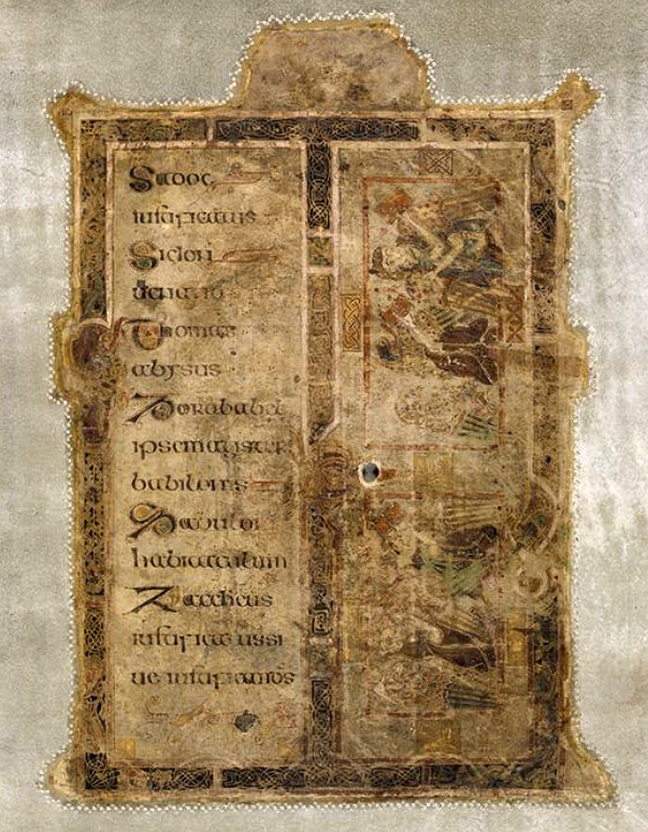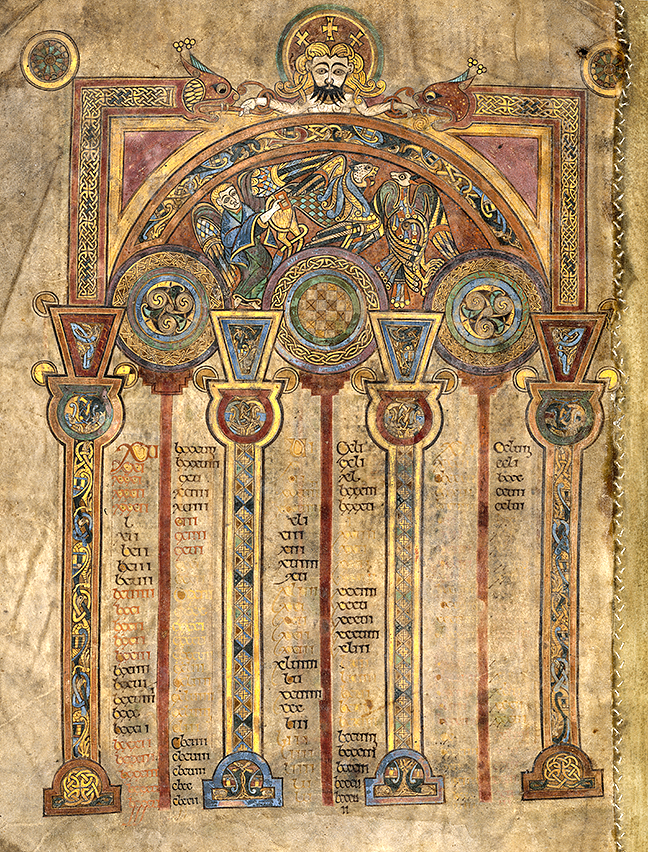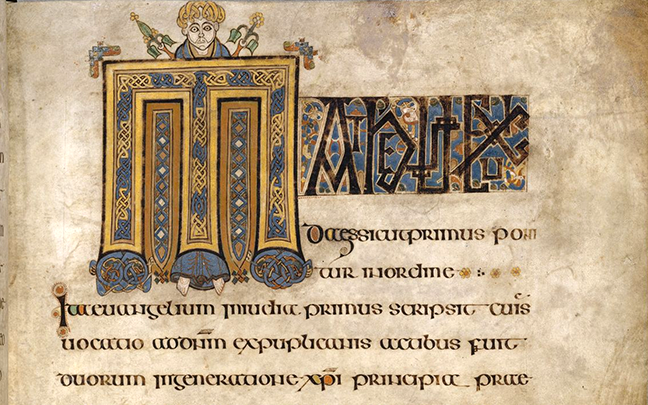Home / History / Irish History / The Book of Kells: Exploring an Irish Medieval Masterpiece / The Book of Kells: A Christian text
This article is from the free online
The Book of Kells: Exploring an Irish Medieval Masterpiece


Reach your personal and professional goals
Unlock access to hundreds of expert online courses and degrees from top universities and educators to gain accredited qualifications and professional CV-building certificates.
Join over 18 million learners to launch, switch or build upon your career, all at your own pace, across a wide range of topic areas.

 Fig 1. The importance of the written word is emphasised throughout the Book of Kells by the multiple images of figures holding books.
Fig 1. The importance of the written word is emphasised throughout the Book of Kells by the multiple images of figures holding books.  Fig 2. The end of a guide to Hebrew names on the (now) first page of the Book of Kells
Fig 2. The end of a guide to Hebrew names on the (now) first page of the Book of Kells  Fig 3. A canon table on
Fig 3. A canon table on  Fig 4. The opening word of the Argumentum of Matthew ‘Matthew, who was of the Jews…; on
Fig 4. The opening word of the Argumentum of Matthew ‘Matthew, who was of the Jews…; on 





